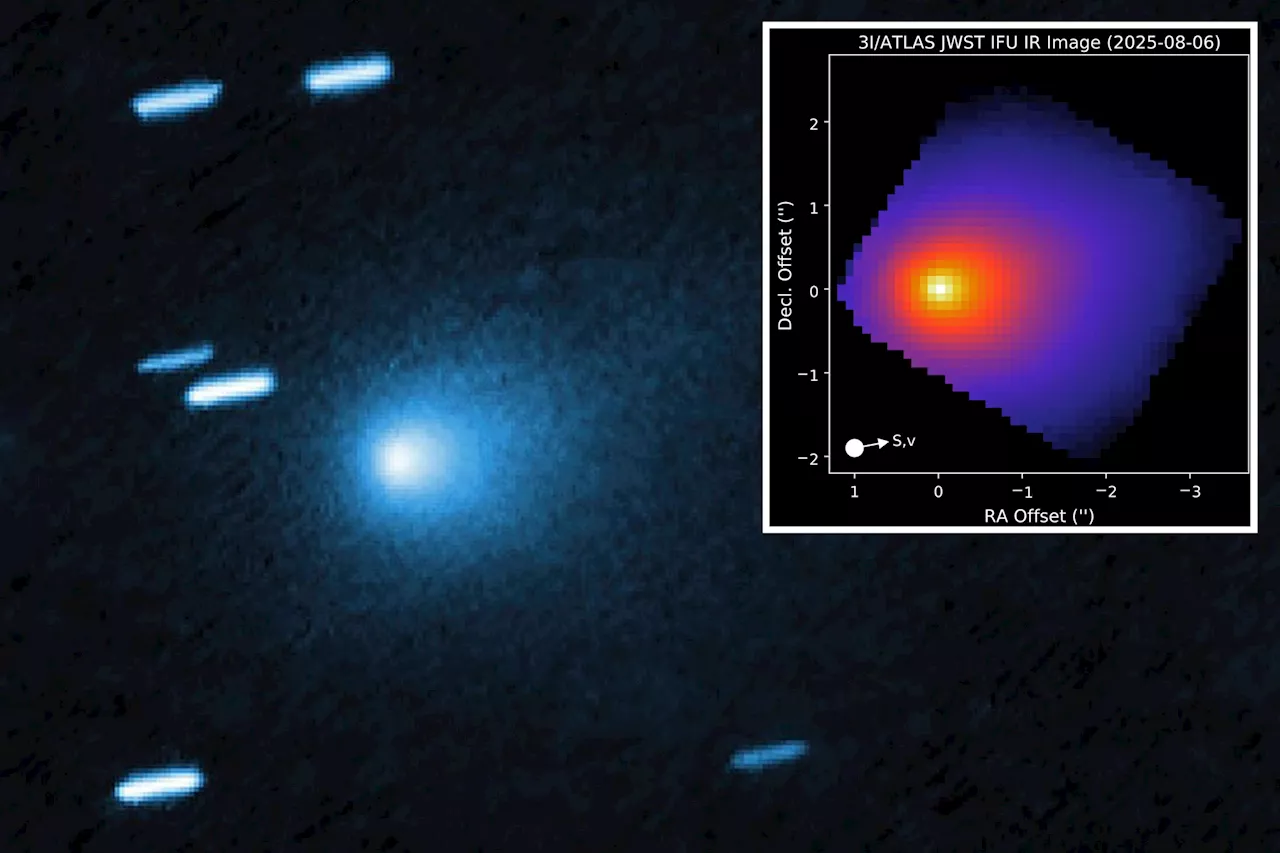Science
Harvard Scientist Unveils Unique Metal Alloy from 3I/ATLAS

A recent analysis of the interstellar object known as 3I/ATLAS has revealed it is emitting a metal alloy never before seen in nature, according to Dr. Avi Loeb, an astrophysicist at Harvard University. Observations taken by the Keck II telescope in Hawaii in August showed that this object, which is traversing the solar system, is producing a plume containing four grams of nickel per second, without any detectable iron, a finding unprecedented in the study of comets.
The alloy identified is known as nickel tetracarbonyl, a compound typically associated with industrial manufacturing processes. Dr. Loeb noted, “There is only one place where that is known to exist, and that is in industrially produced nickel alloys.” This assertion highlights the uniqueness of the findings regarding 3I/ATLAS, as the alloy has never been observed in any other cosmic object.
Unusual Characteristics of 3I/ATLAS
In addition to the unexpected emission of nickel tetracarbonyl, 3I/ATLAS exhibits another intriguing characteristic: it lacks the typical cometary tail seen in such celestial bodies. Dr. Loeb explained, “We usually see beautiful tails extending from the object away from the Sun, and in this case, there was no evidence for such a tail.” Instead, images from the Hubble Space Telescope revealed a stream of materials—approximately 330 pounds per second—pointing directly towards the Sun.
This stream consists predominantly of carbon dioxide and water, with trace amounts of cyanide and nickel. The absence of a traditional cometary tail raises questions about the processes at work within 3I/ATLAS. Dr. Loeb speculated, “Why are we seeing a jet pointed at the Sun? A stream of material in the direction of the Sun?” Such peculiar behavior encourages astronomers to reconsider the fundamental characteristics of interstellar objects.
Ongoing observations are critical, as skywatchers globally await further images from the Mars Reconnaissance Orbiter. Captured by the HiRISE camera between October 4 and 7, 2025, these images are anticipated to provide additional insights into 3I/ATLAS. However, the release of this data has been delayed due to the current government shutdown affecting NASA’s communications department. Dr. Loeb expressed frustration at the situation, stating, “Who cares about the communication departments? We want to see the data from the scientists.”
As 3I/ATLAS continues its brief passage through our inner solar system, the astronomical community remains eager for more revelations that could reshape our understanding of interstellar matter and the processes that govern it. The discoveries surrounding this unique object underscore the ongoing importance of observational astronomy and the need for timely communication of scientific findings.
-

 Science4 weeks ago
Science4 weeks agoALMA Discovers Companion Orbiting Giant Red Star π 1 Gruis
-

 Top Stories2 months ago
Top Stories2 months agoNew ‘Star Trek: Voyager’ Game Demo Released, Players Test Limits
-

 Politics2 months ago
Politics2 months agoSEVENTEEN’s Mingyu Faces Backlash Over Alcohol Incident at Concert
-

 World2 months ago
World2 months agoGlobal Air Forces Ranked by Annual Defense Budgets in 2025
-

 World2 months ago
World2 months agoElectrification Challenges Demand Advanced Multiphysics Modeling
-

 World2 months ago
World2 months agoMass Production of F-35 Fighter Jet Drives Down Costs
-

 Business2 months ago
Business2 months agoGold Investment Surge: Top Mutual Funds and ETF Alternatives
-

 Science2 months ago
Science2 months agoTime Crystals Revolutionize Quantum Computing Potential
-

 Top Stories2 months ago
Top Stories2 months agoDirecTV to Launch AI-Driven Ads with User Likenesses in 2026
-

 Entertainment2 months ago
Entertainment2 months agoFreeport Art Gallery Transforms Waste into Creative Masterpieces
-

 Health2 months ago
Health2 months agoGavin Newsom Critiques Trump’s Health and National Guard Plans
-

 Business2 months ago
Business2 months agoUS Government Denies Coal Lease Bid, Impacting Industry Revival Efforts









